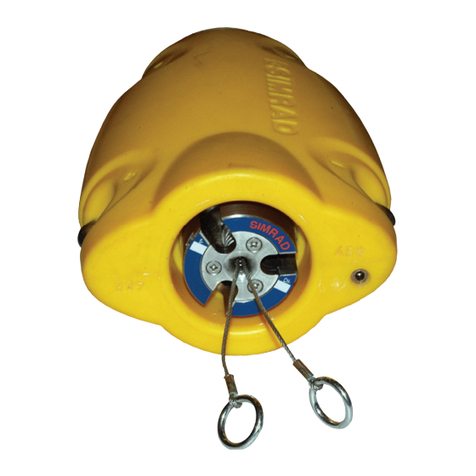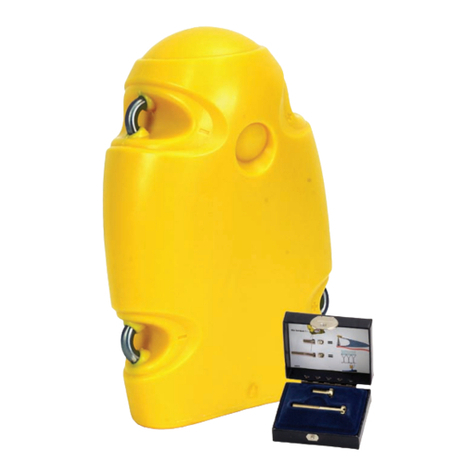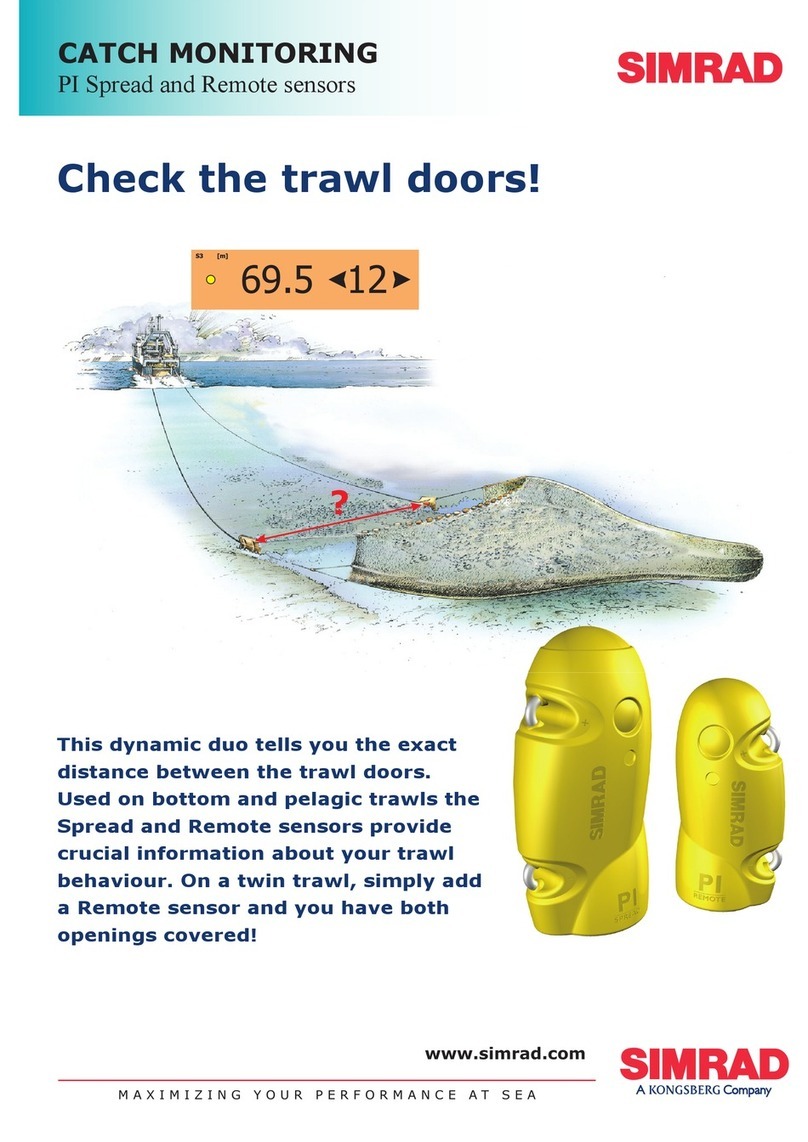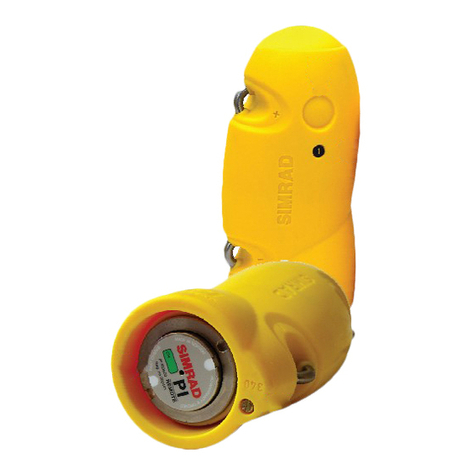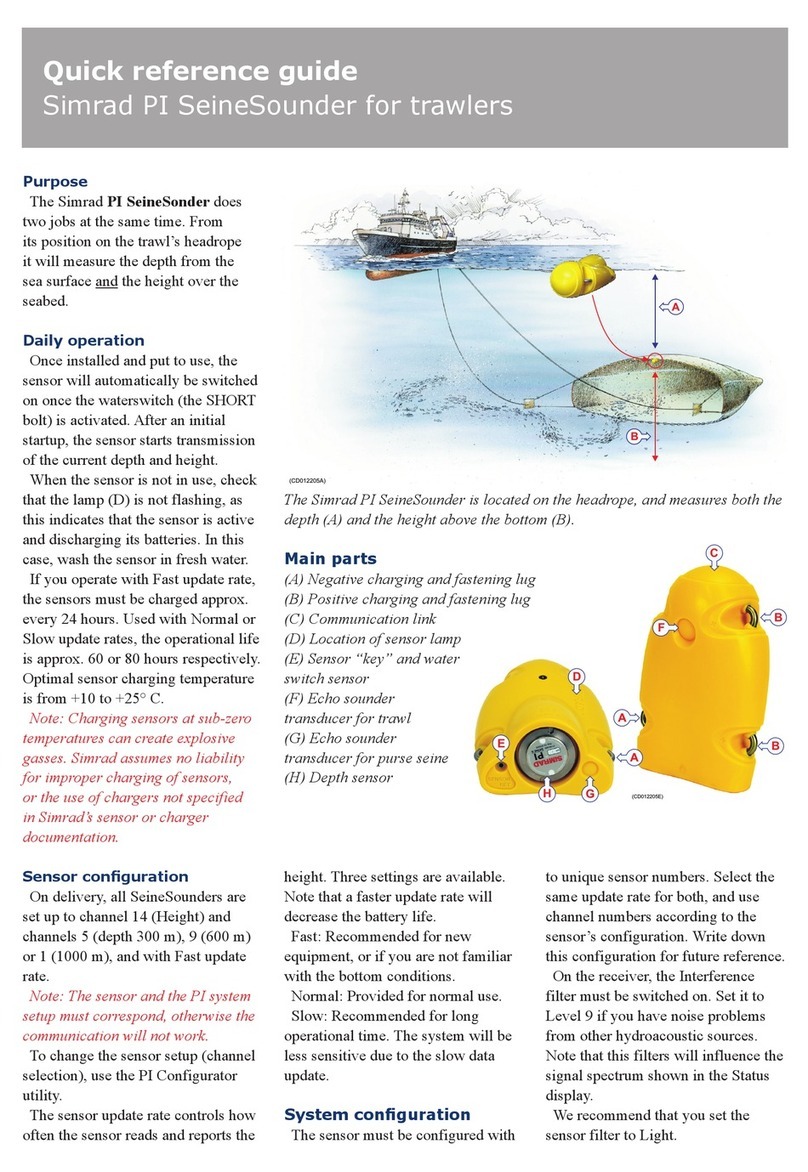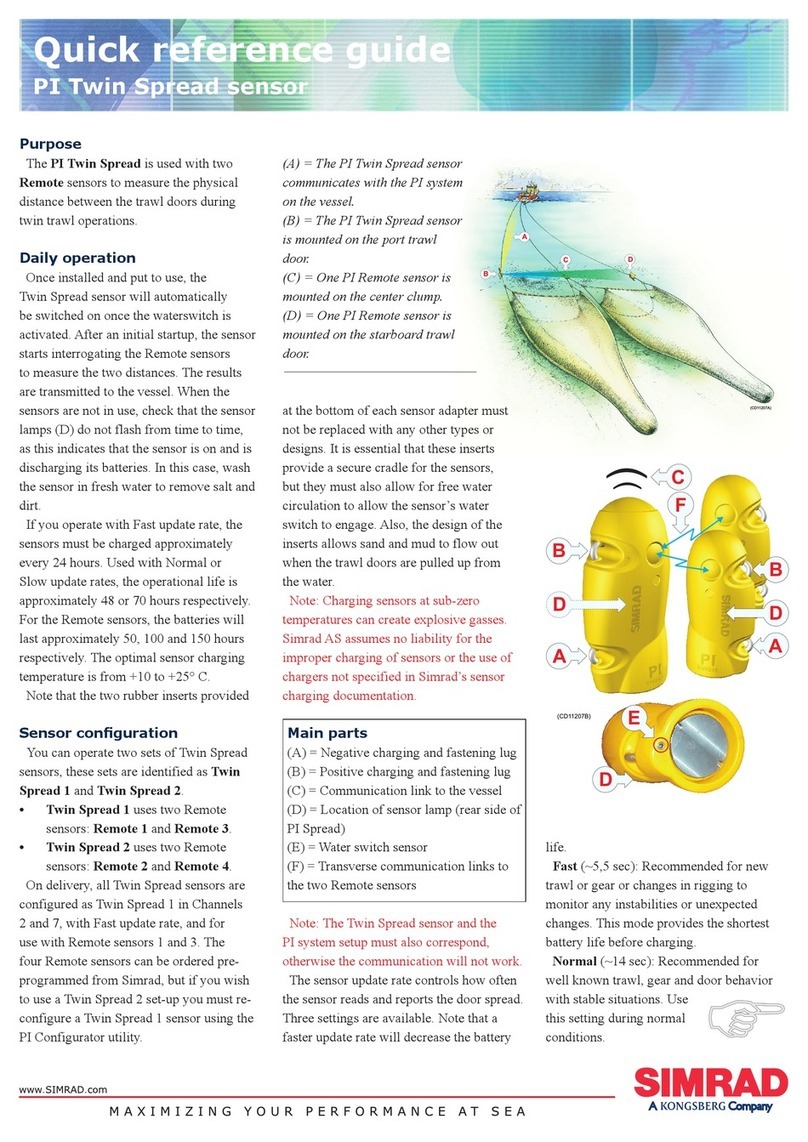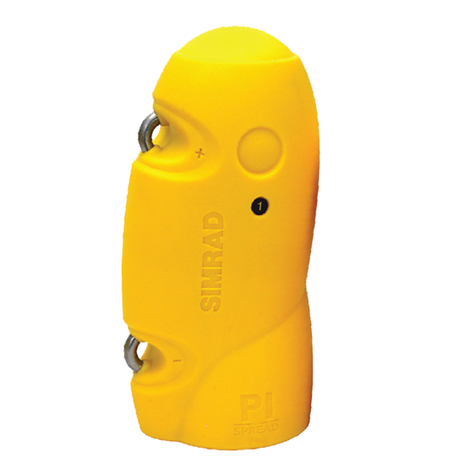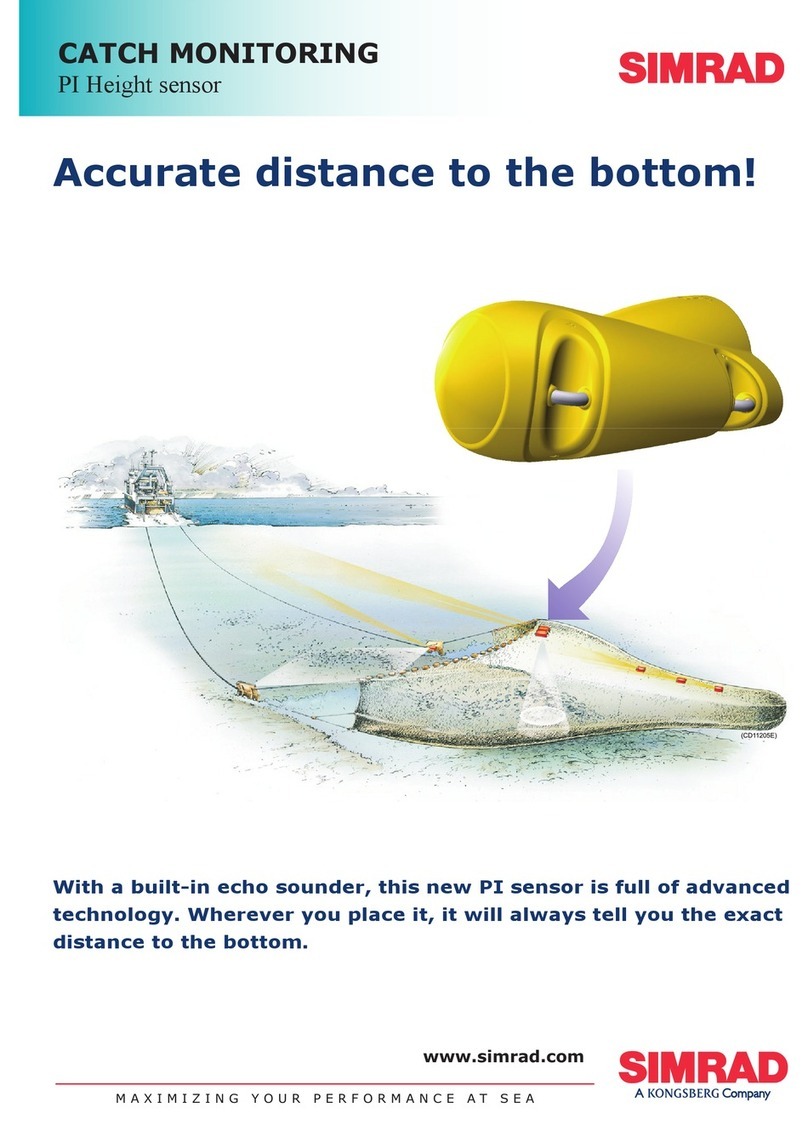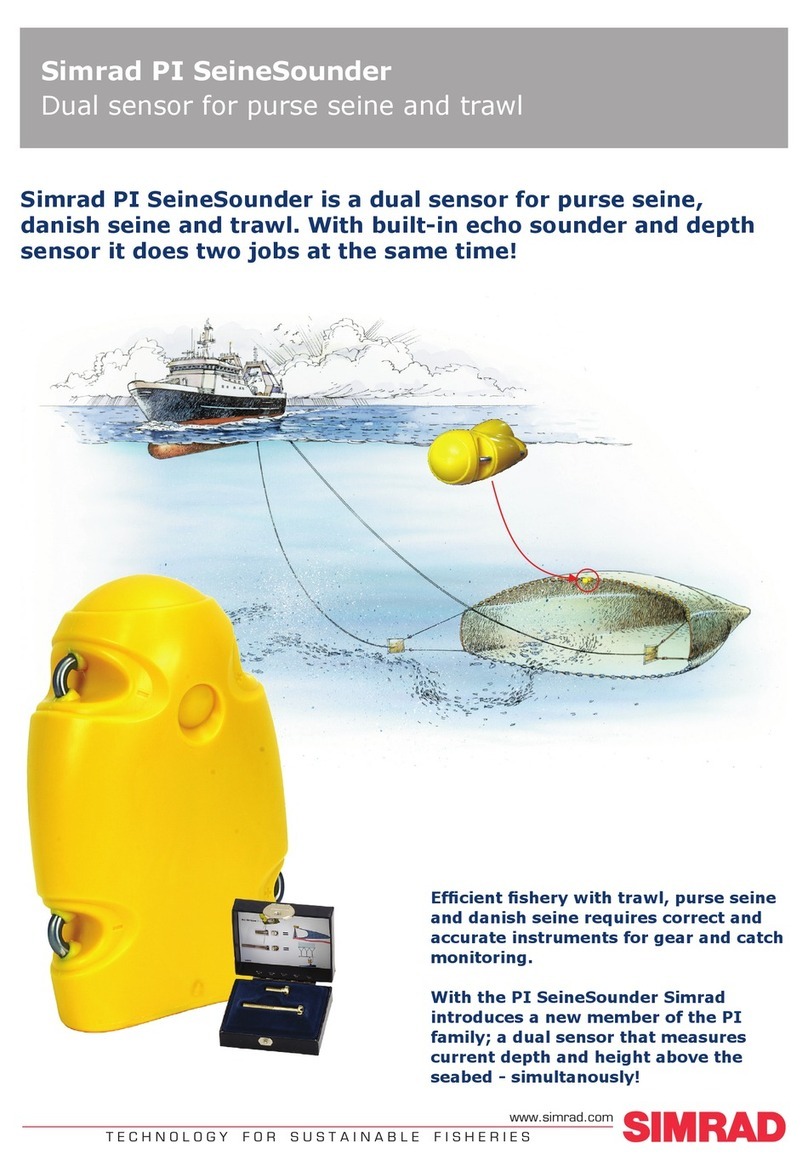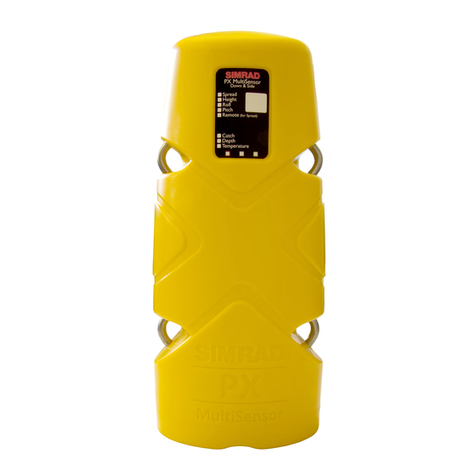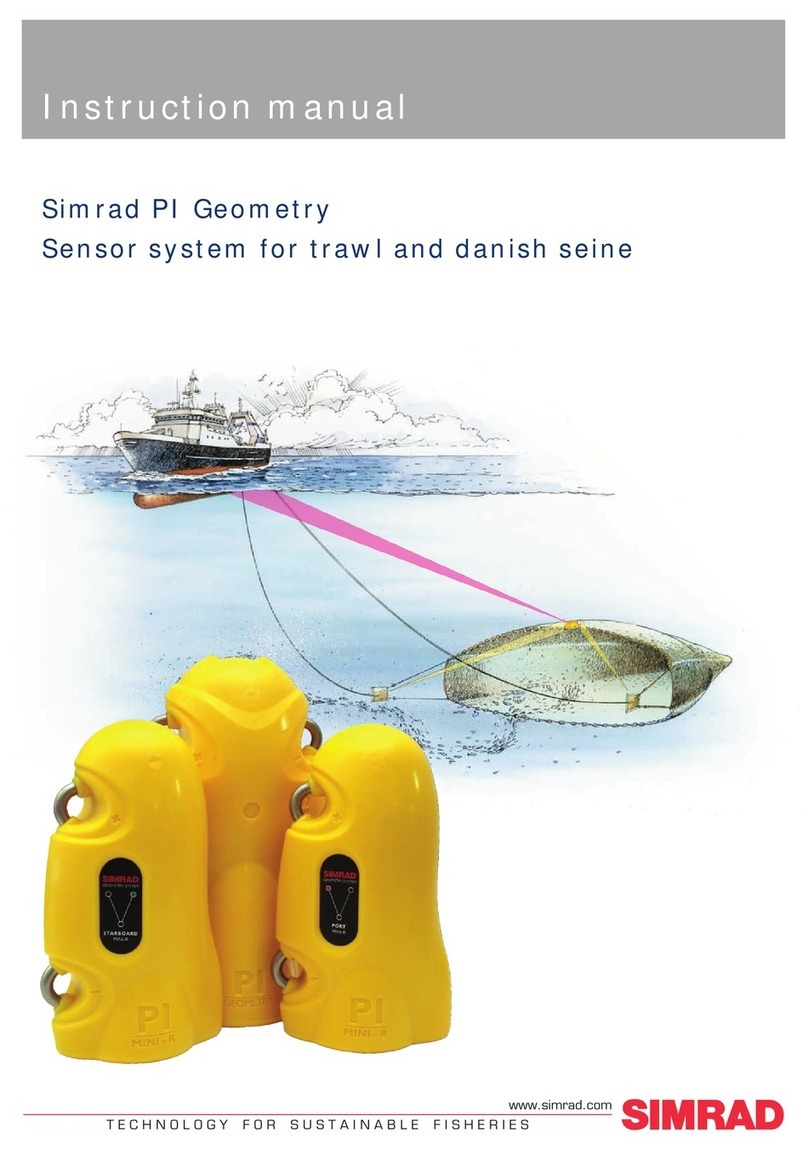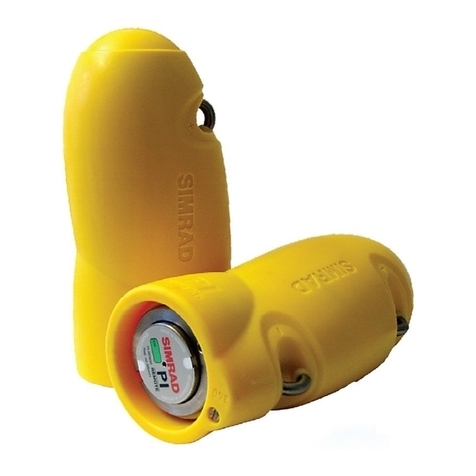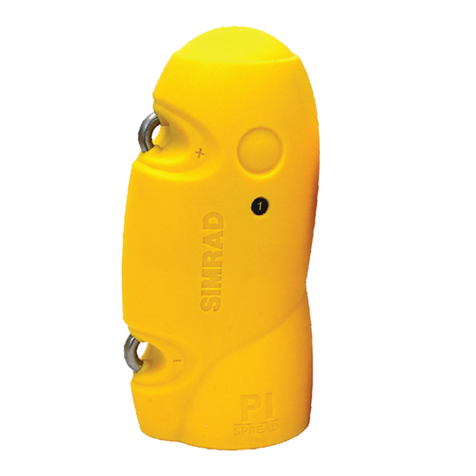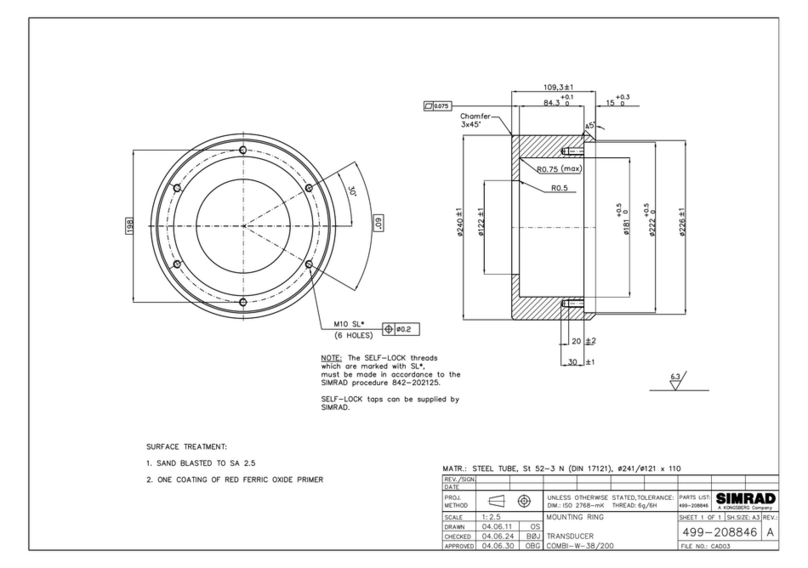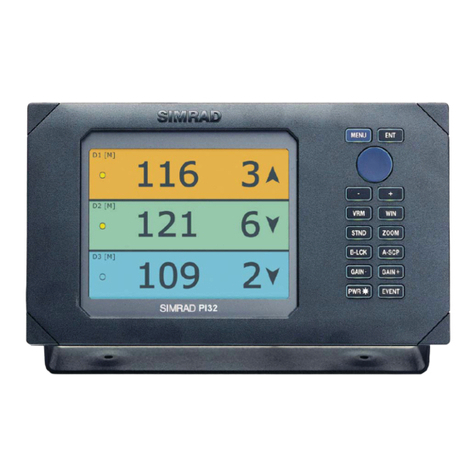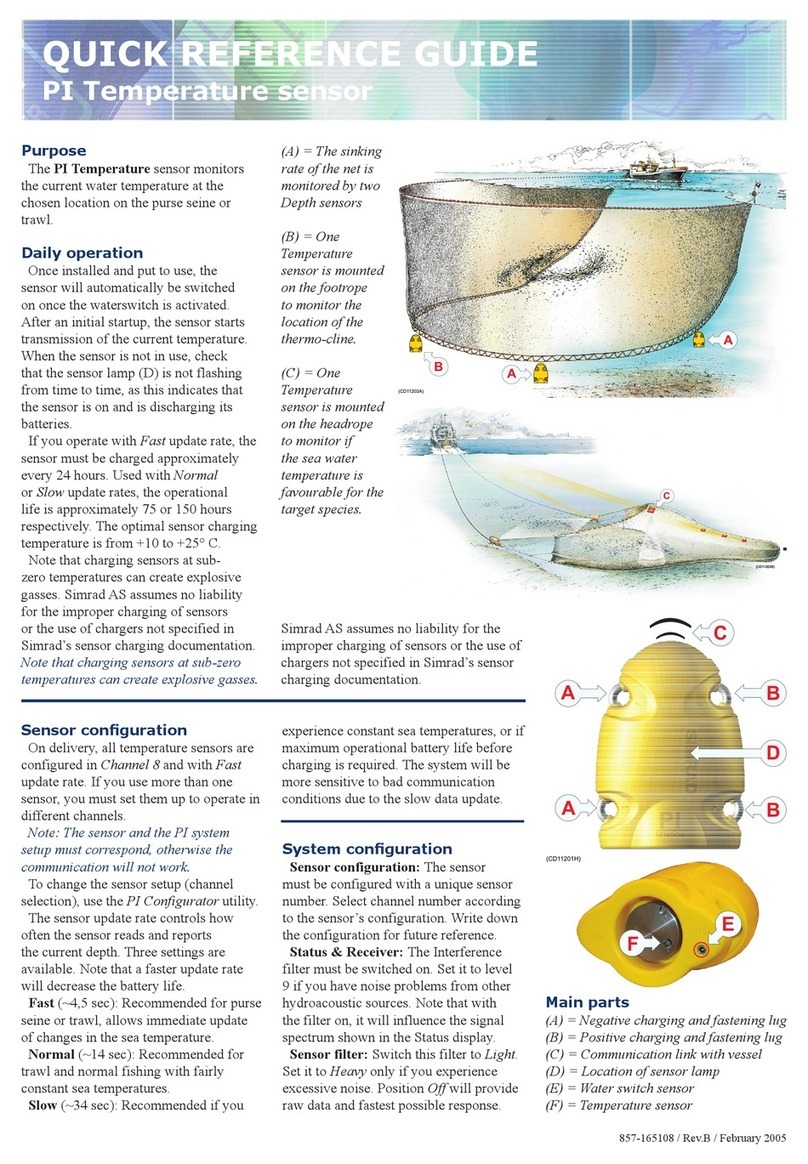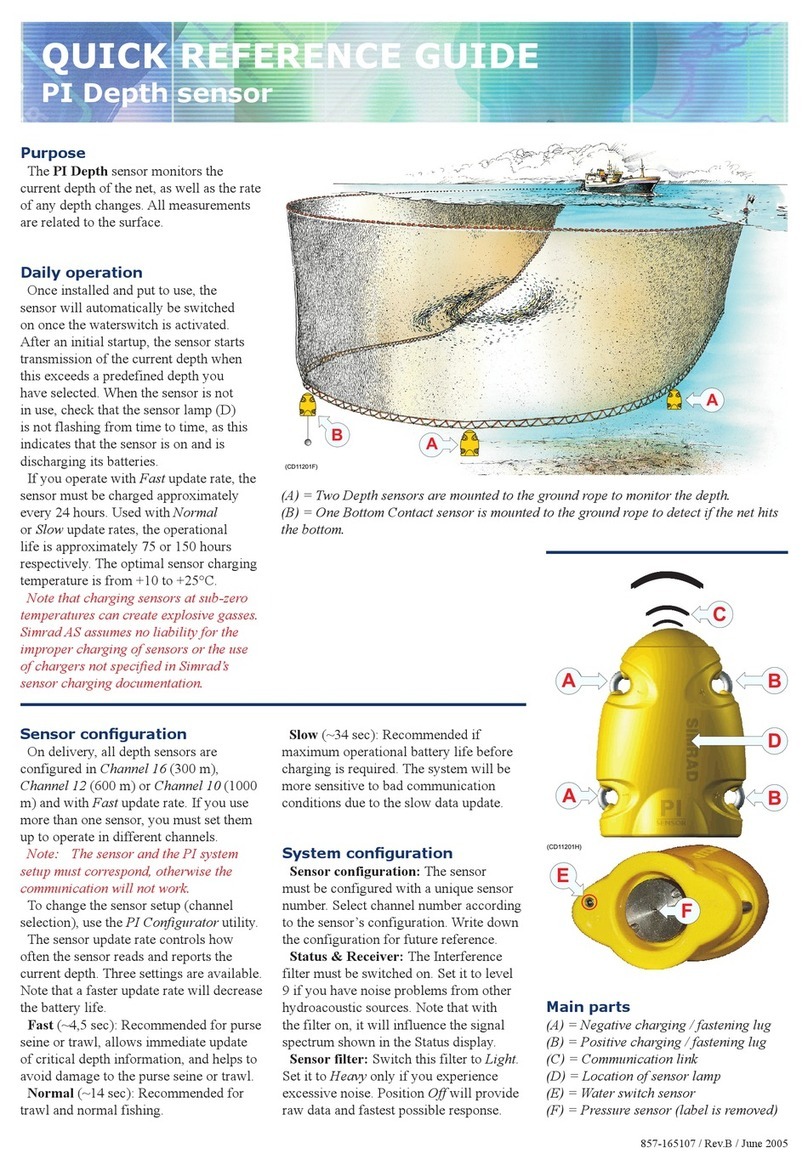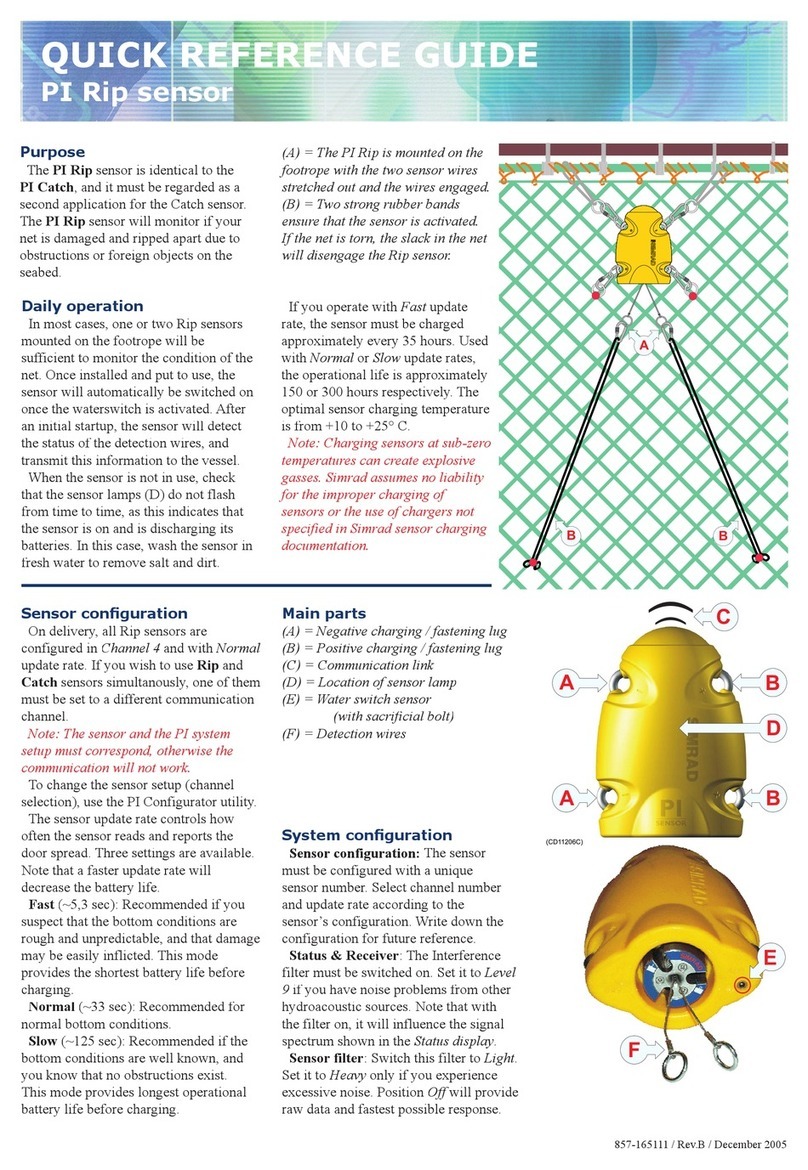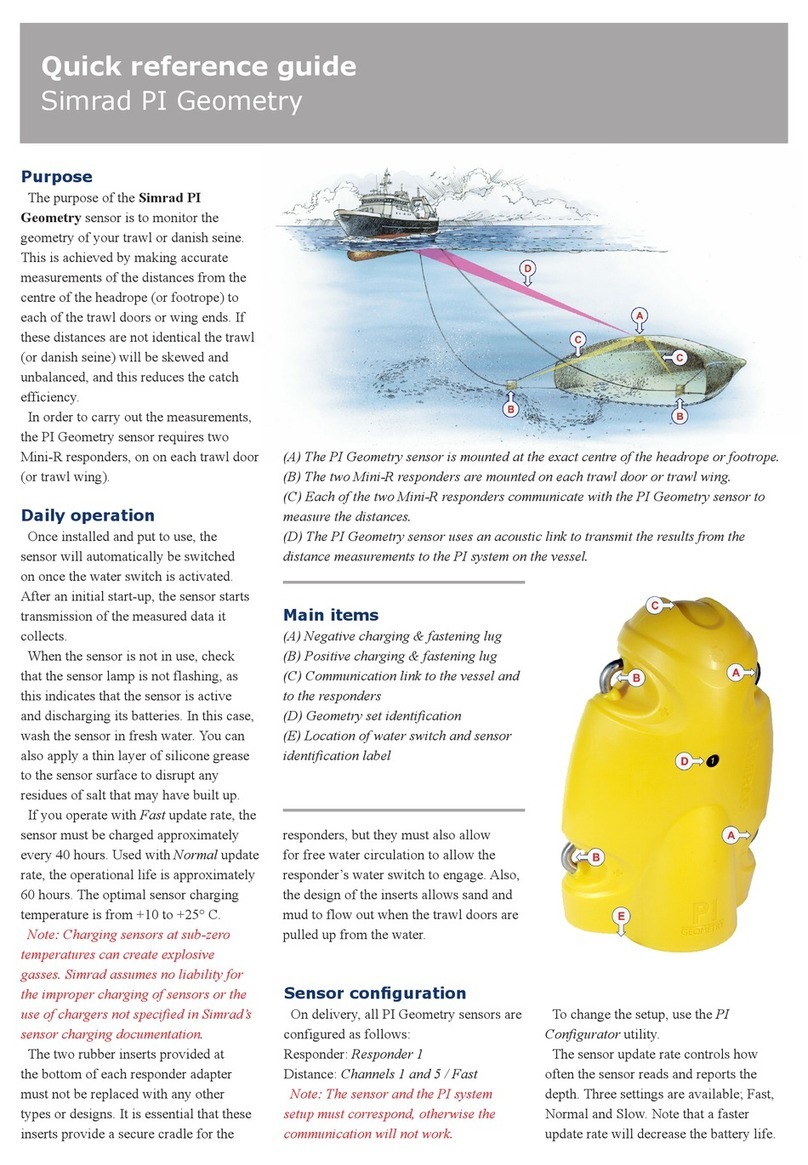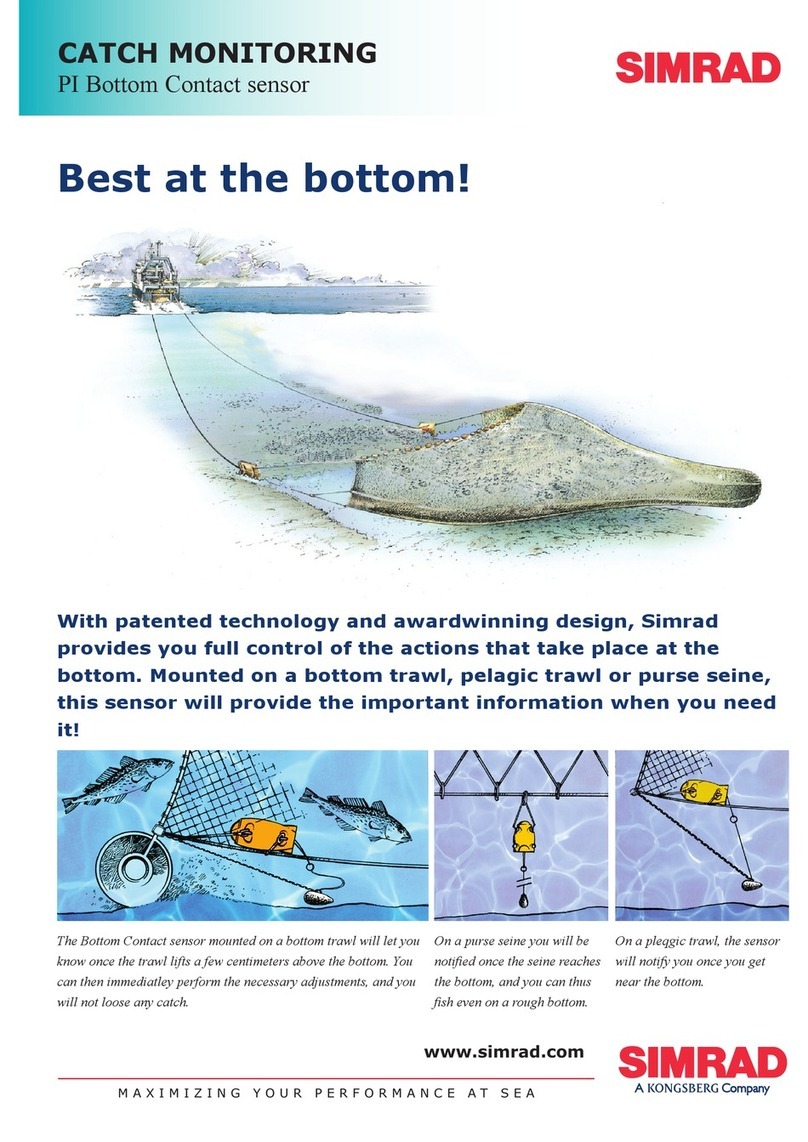
QUICK REFERENCE GUIDE
PI Height sensor
Purpose
current height of the trawl, as well
as the rate of any height changes. All
measurements are related to the bottom.
(A) = The PI Height sensor is normally mounted on the headrope, and by means of the
built-in echo sounder it will measure the distance to the bottom.
(B) = Echo sounder transmission field
Once installed and put to use, the Height
sensor will automatically be switched
on once the waterswitch is activated.
After an initial startup, the sensor starts
the echo sounder, and the depth results
are transmitted to the vessel. When the
sensors are not in use, check that the
sensor lamp (D) do not flash from time
to time, as this indicates that the sensor is
on and is discharging its batteries. In this
case, wash the sensor in fresh water to
Fast update rate, the Fast
sensors must be charged approximately
every 35 hours. Used with
update rates, the operational
life is approximately 60 or 250 hours
respectively. The optimal sensor charging
temperature is from +10 to +25° C. The
sensor can only be charged with the
Note: Charging sensors at sub-zero
temperatures can create explosive
gasses. Simrad assumes no liability for
the improper charging of sensors or the
use of chargers not specified in Simrad’s
sensor charging documentation.
Main parts
(A) = Negative charging and fastening lug
(A) = Negative charging and fastening lug
(B) = Positive charging and fastening lug
(B) = Positive charging and fastening lug
(D) = Location of sensor lamp
(E) = Water switch sensor
On delivery, all Height sensors are
Note: The sensor and the PI system
setup must correspond, otherwise the
communication will not work.
To change the sensor setup (channel
PI Configurator utility.PI Configurator
The sensor update rate controls how
often the sensor reads and reports the
height. Three settings are available. Note
that a faster update rate will decrease the
(~5,5 sec): Recommended for new
trawl or changes in rigging to monitor
any instabilities or unexpected changes.
This mode provides the shortest battery
(~14 sec): Recommended for
well known trawl behavior with stable
857-165110 / Rev.B / December 2005
situations. Use this setting during normal
(~34 sec): Recommended to
monitoring a stable situation over time.
The system will be more sensitive to bad
communication conditions due to the slow
data update. This mode provides longest
operational battery life before charging.
must be configured with a unique
sensor number. Select update rate
and channel number according to the
sensor’s configuration. Write down this
configuration for future reference.
filter must be switched on. Set it to
if you have noise problems from other
hydroacoustic sources. Note that with
the filter on, it will influence the signal
Catch/Bottom sensor filter:
you experience excessive noise. Position
will provide raw data and fastest
Off will provide raw data and fastest Off
